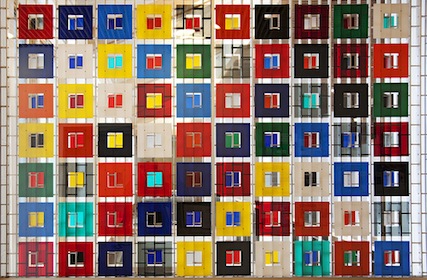Math Art
George Hart once said that "Math is the most abstract art," and indeed few people see
the creativity and beauty in it that many mathematicians do. By combining mathematical ideas with traditional media
like sculpture and music, the broader public can appreciate this artistic side of math. In this talk,
we'll explore the uncountable ways art has been infused with math, from using DeBrujin's theorem to count
the patterns in traditional Japanese braiding, to edible polyhedra and much more!
slides
Below is some of the mathematical art I have made:
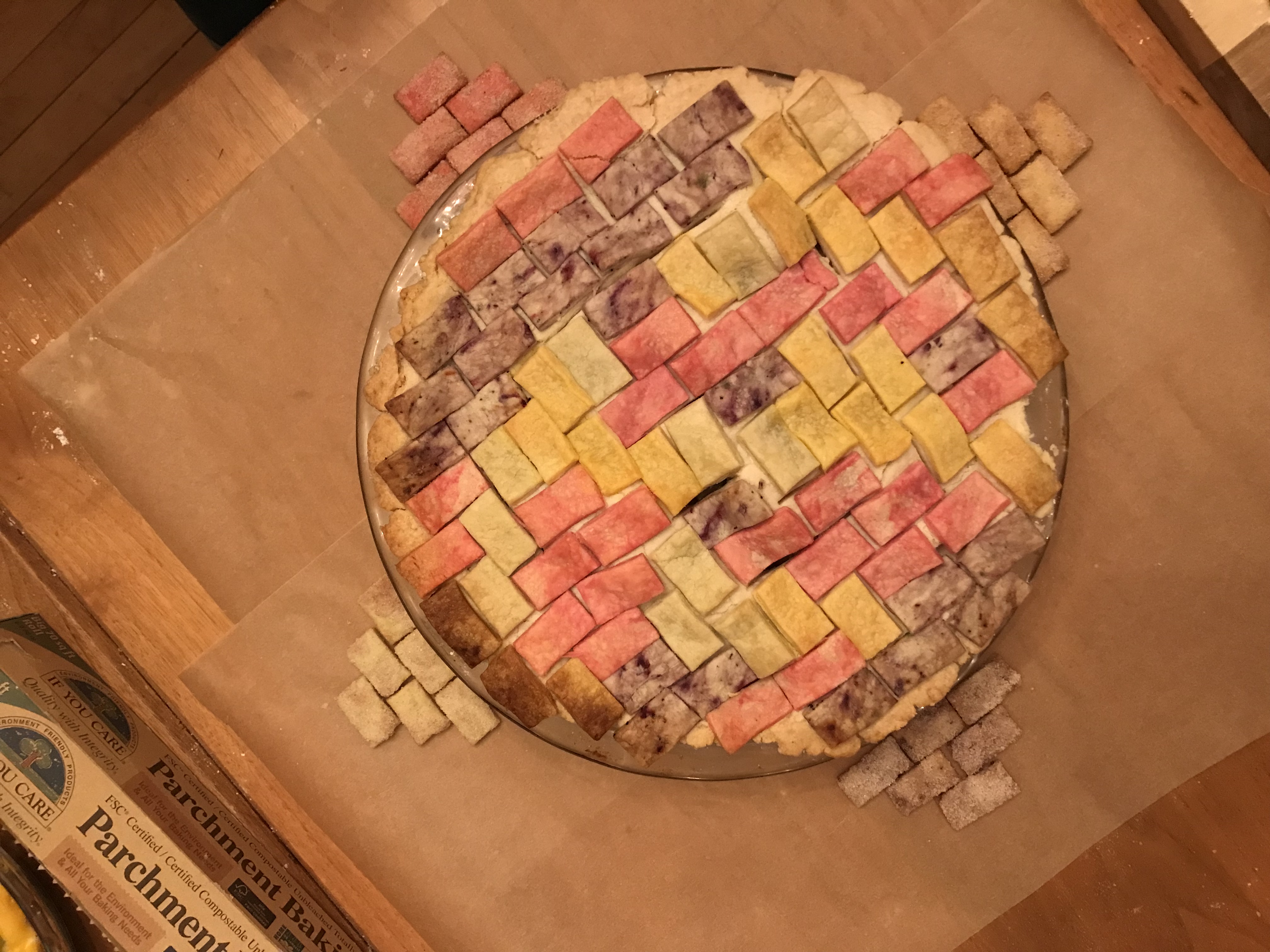
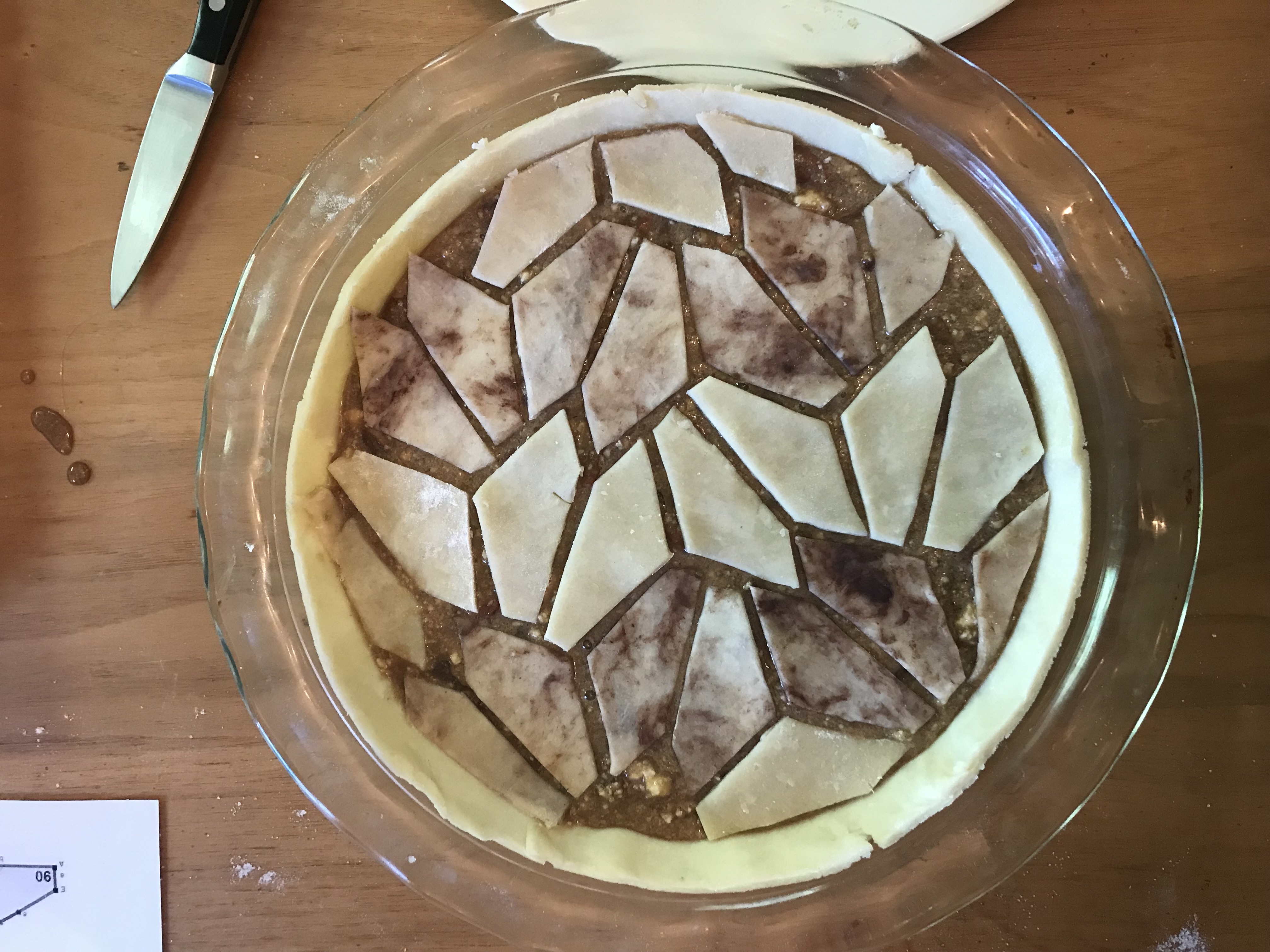
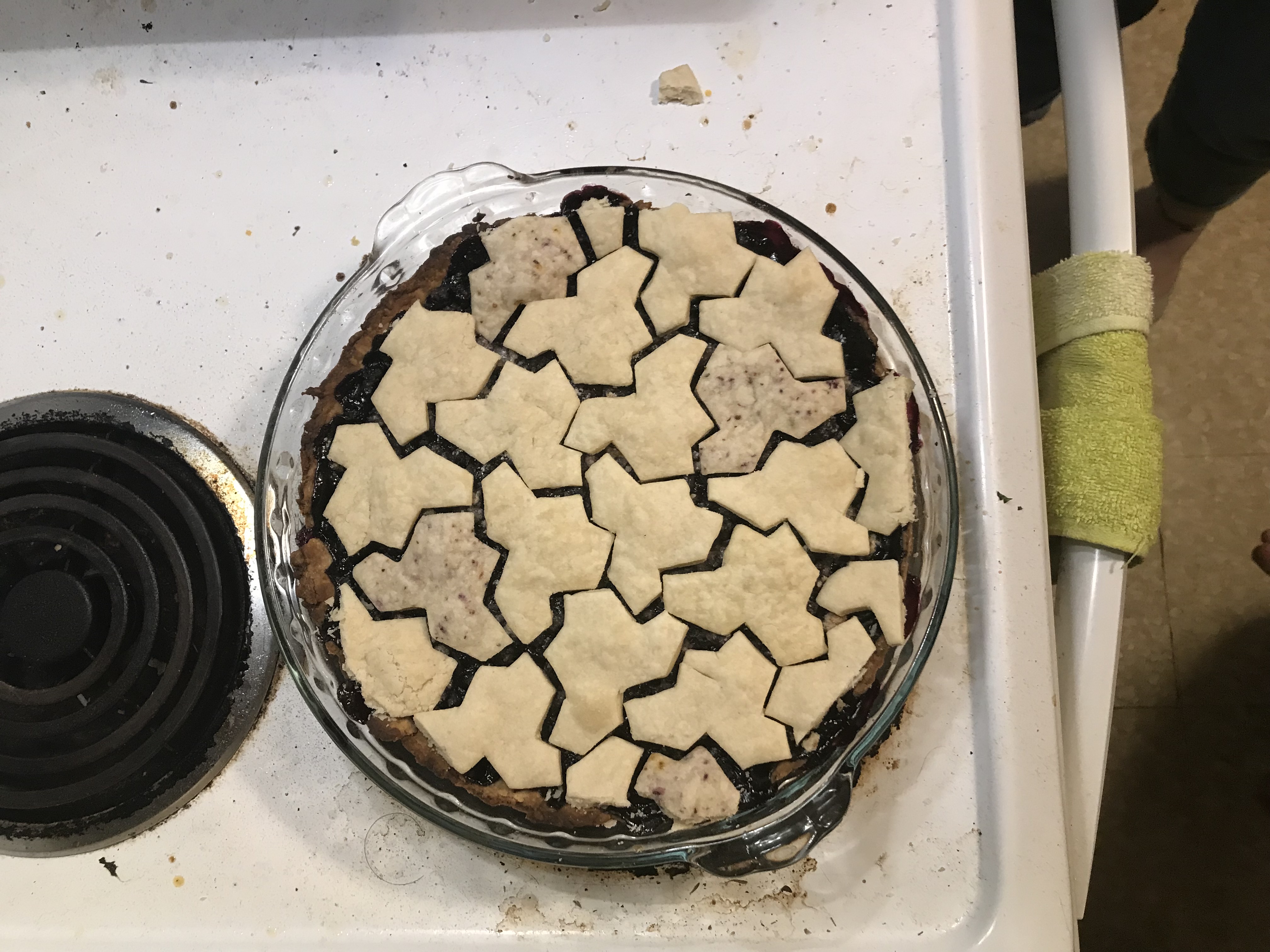
These pies are inspired by Lauren Ko, author of Piometry, whose book was helpful in making these. They are joint
work with Elizabeth Buchanan, Beth-Anne Castellano, and Alex Wilson. Each represents a
different mathematical concept.
The first is a random tiling of the "Aztec diamond" by dominos, color coded by
their orientation. One of the artic circle theorems says that a randomly selected tiling will have a circle of
randomness, surrounded by "frozen" sections at the corners, where all pieces have the same orientation.
The second is one of the pentagonal tilings discovered by Marjorie Rice, an amateur mathematician that made a massive
contribution to a longstanding problem about the possible tilings by irregular pentagons. It reminds us that everyone
can have great ideas, and that math is something for everyone.
The last pie is the aperiodic monotile discovered
by Smith, Myers, Kaplan, and
Goodman-Strauss. This tile solves the "Einstein" problem, namely it is a single tile that can only cover the
plane without any symmetries, which had been a longstanding question that ended up admitting a unexpectedly simple
solution. This too was solved by an amateur mathematician.
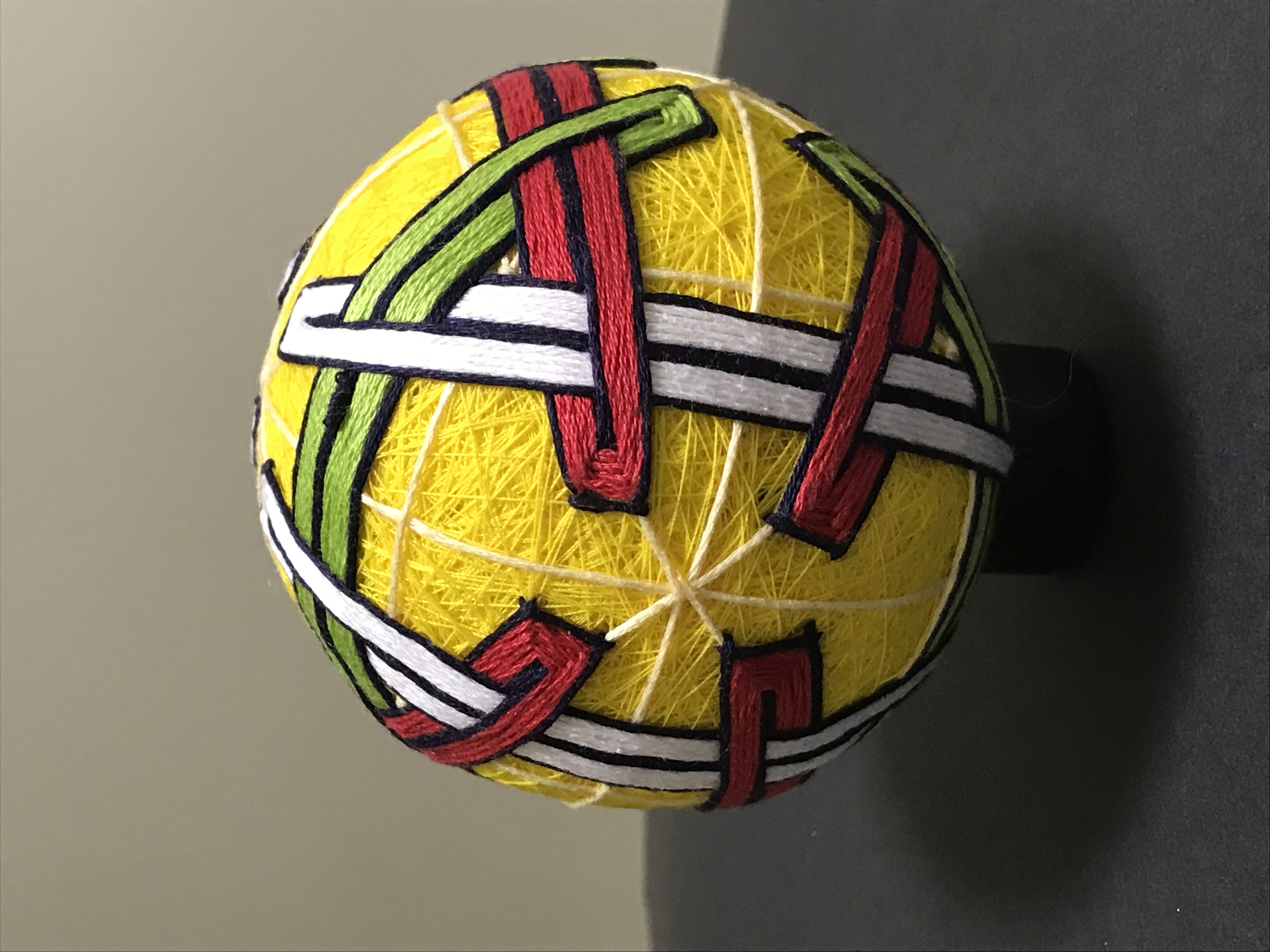
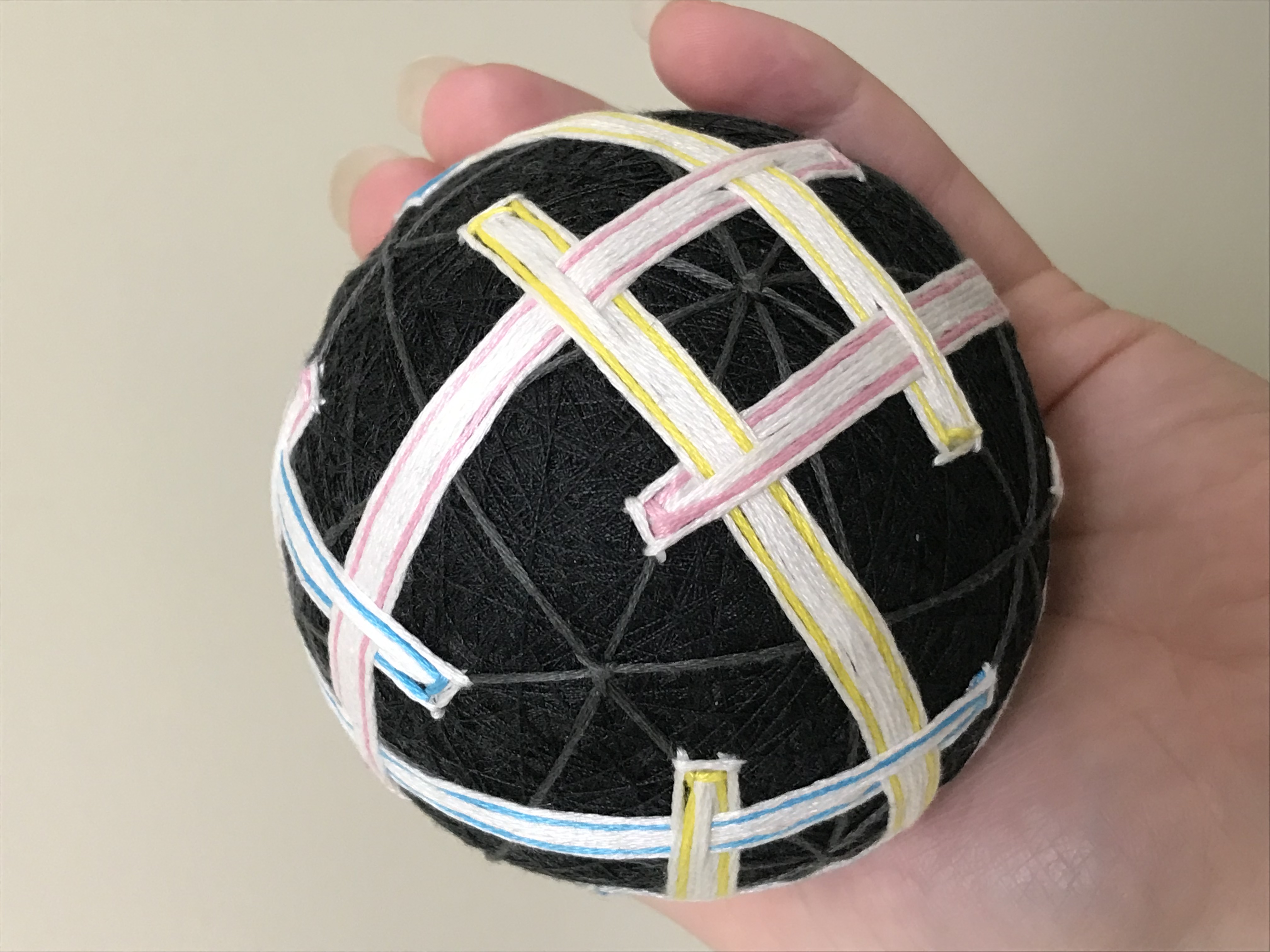
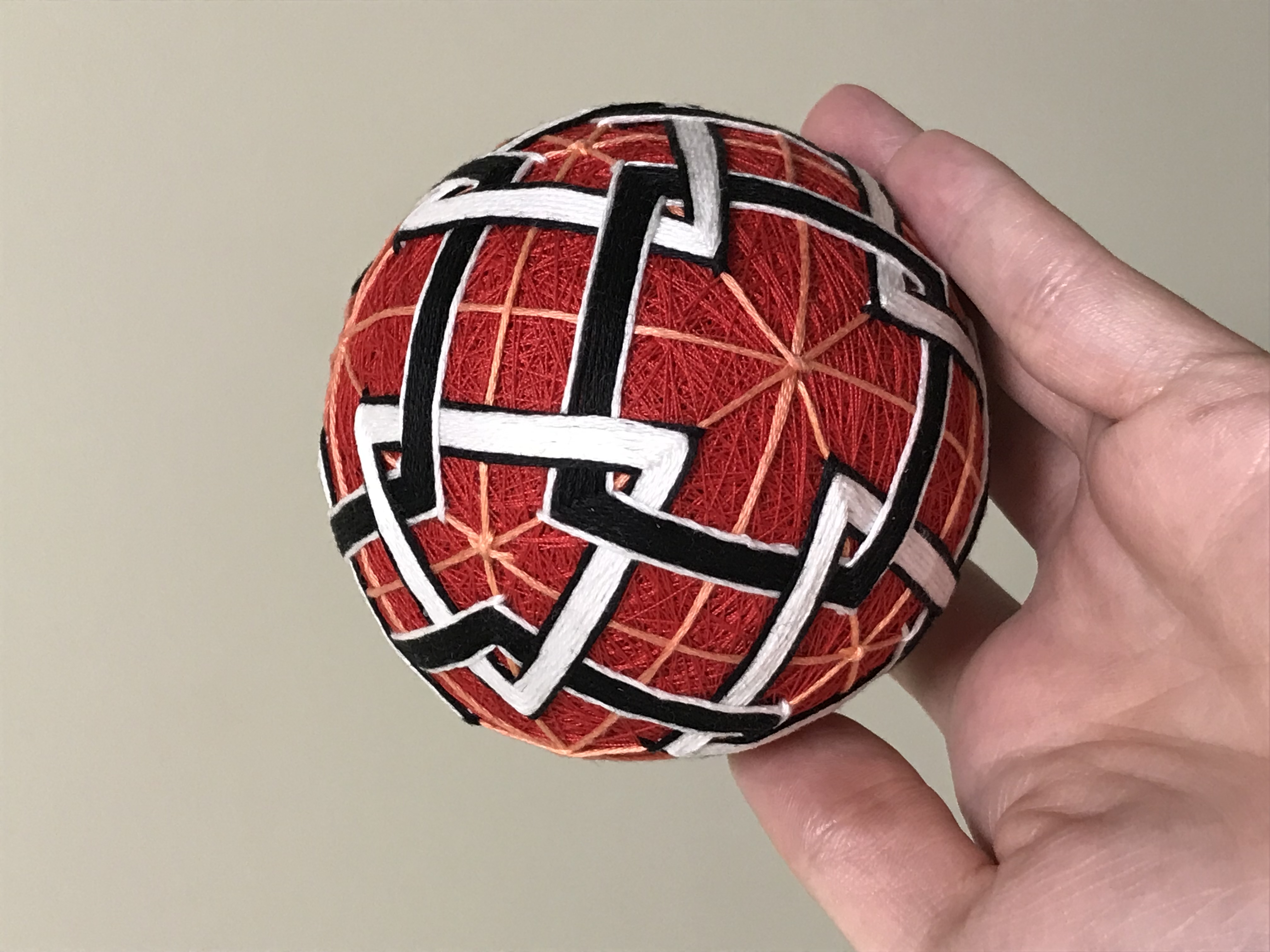
These are part of a series of temari I have been making. Each one starts as a styrofoam ball, is wrapped in yarn,
then thread, then embroidered with a pattern. This is a craft from Japan (traditionally with a bundle of
cloth instead of the styrofoam core) which originated in China.
In addition to being quite stunning, they are a great avenue to play around with spherical symmetries.
The first two are different Brunnian links, extensions of the Borrommean rings, where if one band is removed,
they all can separate. These designs are based on polyhedra, where each face has a modular structure that combines to
form the link. Specifically, the first has a swirl of three bands for each face of an octahedron, and the second
has a swirl of four bands for each face of the cube. This allows the missing band to propagate, untangling the rest
of the link. I'm planning on also laser cutting wood with these patterns into tiles that you can assemble on a
plane, or latch together into polyhedra. This systems can produce a unique Brunnian link for any polyhedron. I've also
color coded the bands to help evoke the underlying symmetry.
The last ball is a an "orderly tangle" of sorts, a link where each component is a polygon. There are some great
models of these by
George Hart and
also discussed in a book by Alan Holden. I've found making models with plastic straws made into triangles and square is
a good way to play around with these, and have a few as well. This design uses the duality of the color scheme to draw
attention to the dual nature of the octahedron and cube, every vertex of one corresponds to a face of the other.
Probability Paradoxes - Middle and Highschool Summer Math Camp
Along with other graduate students David Freeman, Alina Glaubitz, and Jinman Park, I developed
material for and instructed the Exploring Mathematics Summer camp for middle and high school children in
Summer 2022. One week was on paradoxical results in probability, which I summarized in a
presentation.
Directed Reading Program
Along with Ben Adenbaum, I co-ran the
Dartmouth mathematics DRP in the below terms.
We pair undergraduate students with graduate students and post docs to learn math beyond the standard
curriculum.
- Winter 2023
- Spring 2023, I also supervised Jamison Anderson on a project about mathematical art.
- ...
Hackenbush - Science day 2023
For science day 2023, graduate students Grant Molnar, Kelly Cantwell, and I, along with post doc
Longmei Shu, ran a session on the game Hackenbush for middle and high school students. We made a
handout for students to
complete which explained how to play the game and some of the math behind it. Further references are:
- A website where you can play Hackenbush
interactively and make your own games.
- Two sets of
notes
about the math behind this game.
- A short story
explaining another way to construct the Surreal numbers:
- A Youtube video
explaining this game.
Non-Transitive Dice - Sonia Kovalevsky Day
Most springs Dartmouth runs a fun-filled day of mathematics with hands-on
workshops and talks for middle and high school female students and their
teachers, both women and men. Originally started and funded by the Association
for Women in Mathematics, The purpose of the day is to encourage young women to
continue their study of mathematics and to assist the teachers of female
mathematics students.
In the Spring of 2022, I assisted fellow graduate Yanbing Gu in a presentation on the
four color theorem and its generalizations
to higher genus surfaces realized through crochet.
In the Spring of 2023, I co-led a workshop on mathematical games, presenting on
non-transitive dice.
Students collected data on rolling pairs of dice, seeing there was no best die, then saw the
math
to prove this.
